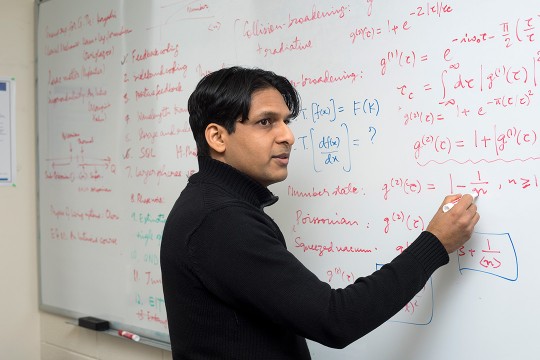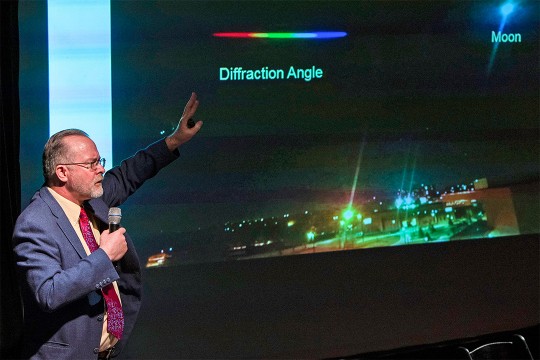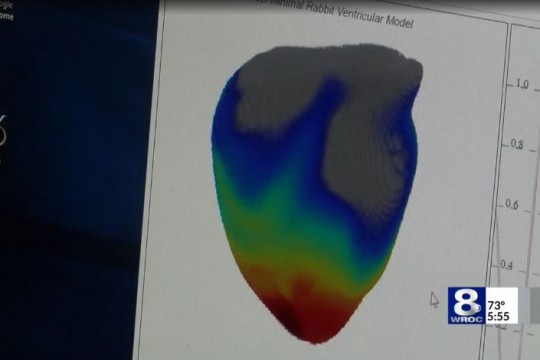News
-
May 9, 2019

Rochester Prep students publish bacteria research in scientific journal
The Democrat and Chronicle reports on a scientific discovery made by three Rochester Prep High School students working with Andre Hudson, professor and department head of the Thomas H. Gosnell School of Life Sciences.
-
May 6, 2019

Many see white clover as a weed, but it’s important to bees
WXXI reports on RIT’s work on the Global Urban Evolution Project.
-
May 6, 2019

Will There Ever Be New Colors That We Can See?
Gizmodo talks to Mark Fairchild, professor of color science and director of the Munsell Color Science Laboratory, and Susan Farnand, assistant professor of color science, about human color perception.
-
May 6, 2019

Physics student Elyse Rood poised for career doing problem-solving engineering for medical software
Before Elyse Rood started working on her senior physics capstone project, she didn’t envision herself working for a software company. But after the commencement ceremony on May 10, she is moving to Madison, Wis., to start a career as a technical solutions engineer at a healthcare software company called Epic Systems.
-
May 2, 2019

A “Laser for Sound” from a Levitated Nanoparticle
Optics and Photonics News features work by Mishkat Bhattacharya, associate professor in the School of Physics and Astronomy.
-
April 30, 2019

NASA ponies up for next-gen solar sails
Cosmos writes about research by Grover Swartzlander, professor in the Chester F. Carlson Center for Imaging Science.
-
April 25, 2019

High school students publish paper with RIT scientists analyzing rare bacterium
Three high school students working in a science lab for the first time made a surprising discovery with an RIT professor. Now, the young women are co-authors on a scientific paper announcing a rare bacterium that kills e-coli.
-
April 25, 2019

Imaging system being developed by Seneca Park Zoo will take visitors to Madagascar
WROC-TV reports on project by RIT and Seneca Park Zoo to develop a virtual reality gaming environment that will let zoogoers experience a Madagascar rainforest ecosystem.
-
April 24, 2019

NASA announces funding for RIT professor to develop novel diffractive solar sails
Scientists have been floating designs for solar sails to propel spacecraft for decades, but a new approach being developed by an RIT professor could be the key to helping spacecraft photograph the poles of the sun for the first time.
-
April 23, 2019

RIT researchers help conduct experiment to study how the first stars and galaxies formed
While many people flock to warm destinations for spring break, two RIT experimental cosmologists spent theirs 6,800 feet high on snow-covered Kitt Peak at the Arizona Radio Observatory. They were deploying an instrument to a 12-meter telescope for a project called the Tomographic Ionized-carbon Mapping Experiment (TIME), which aims to study the universe’s first stars and galaxies.
-
April 23, 2019

Drones are coming soon to a farm near you
Drones are adding a new level of precision to agriculture, giving farmers digital tools for cultivating better and more profitable crops.
-
April 19, 2019

RIT professor created simulation that could help treat heart patients
WROC-TV features Elizabeth Cherry, associate professor and director of the mathematical modeling program.




